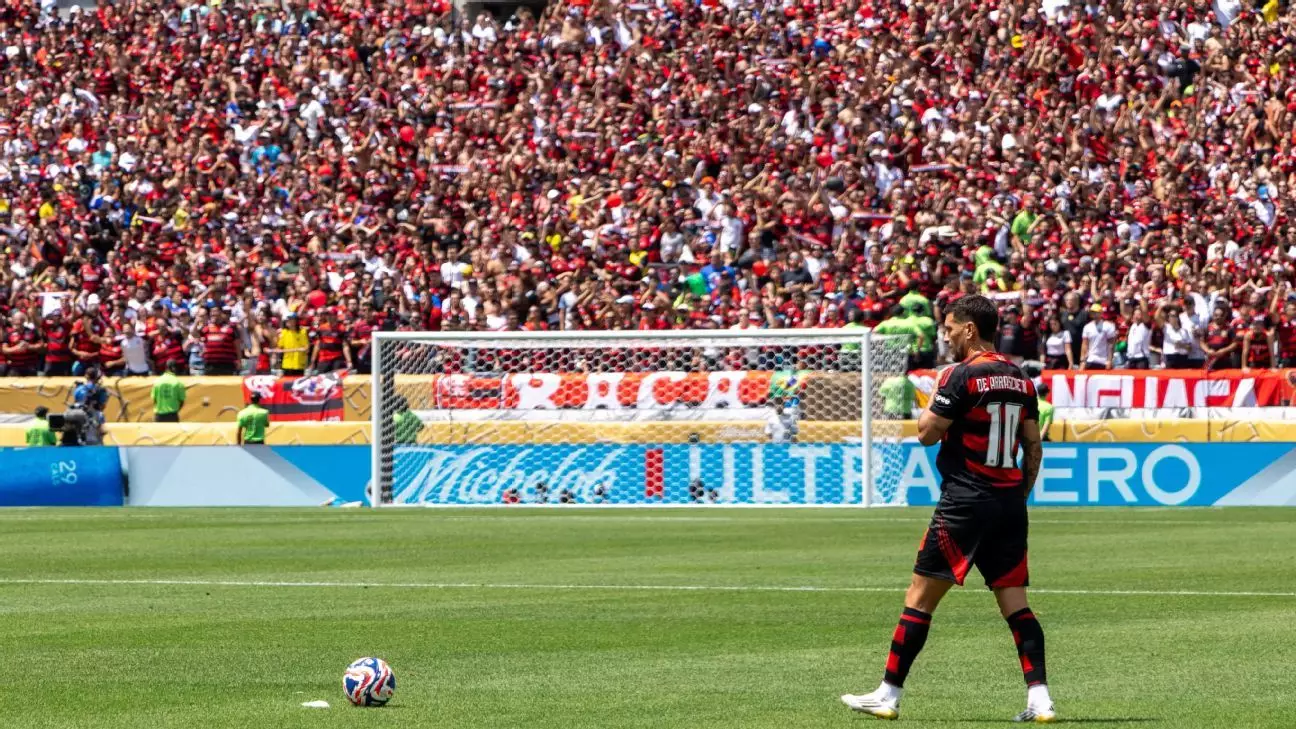Brazil has set its sights on hosting the next FIFA Club World Cup, a prospect that resonates deeply within the South American football community. The ongoing 32-team tournament is currently underway, and the struggles faced by FIFA’s grand experiment are becoming increasingly apparent. From sparse crowds to adverse weather disruptions, the event seems plagued with challenges. Yet, despite these hurdles, the presence and fervor of South American teams, particularly those from Brazil and Argentina, breathe life into this competition and shape it into a gratifying spectacle—one that showcases the rich footballing culture of the continent.
As Brazil boasts engaging supporters who are passionate and loud, there emerges a stark contrast to the quieter crowds attending other matches. The enthusiasm from fans has resoundingly sent a message: this tournament, despite its shortcomings, matters. The participation of six teams from South America, notably the Brazilian contingent, has not only enhanced the atmosphere but has also restored hope for a desirable outcome for South American soccer.
Surprising Performances and Unyielding Spirit
As the tournament progresses, the performances of Brazilian clubs have exceeded many expectations. With five out of the six South American teams in excellent standing, the narrative of their success is rapidly evolving. Clubs like Botafogo and Fluminense have surprised fans and critics alike; Botafogo’s triumph over the formidable Paris Saint-Germain captured attention, defying the odds and showcasing the potential of Brazilian football on the global stage.
Conversely, other clubs like Flamengo and Palmeiras have delivered consistent performances, reflecting their readiness to challenge for the top honors in this tournament. The grueling schedule of South American football means that local talent is in mid-season form, enhancing their competitiveness when facing off against Europe’s elite. The stars have aligned in favor of the South American teams this time around, with players at their peak, fueled by the support of their vibrant fan bases.
The Legacy of the Copa Libertadores
Central to understanding South America’s ambition in the Club World Cup is the historical significance of the Copa Libertadores. Established in 1960, this tournament has not only been a platform for showcasing the continent’s best talent but has also served as a response to Europe’s football dominance. South America’s desire to have its champions challenge European counterparts reveals a deep-rooted fighting spirit that permeates its football culture.
This newly formatted Club World Cup presents an opportunity for redemption. Historically, encounters in the annual Intercontinental Cup have been less favorable for South American clubs, as they have often found themselves at a disadvantage due to timing and preparation. The current tournament, however, seems different. The mid-season placement allows players to harness their energy and compete at high levels, showcasing their talent against the world’s best under favorable circumstances.
Key Players and Tactical Insights
As the tournament progresses into its critical phases, several player performances and tactical decisions have stood out. Flamengo’s tactical management has raised eyebrows, with head coach Filipe Luis making calculated decisions to rest key players while still achieving favorable results. The recent addition of midfielder Jorginho is proving pivotal, as his ability to dictate play has complemented the attacking flair of Flamengo’s wingers.
Moreover, Palmeiras has demonstrated a commitment to strategic investments. Acquiring players of Vitor Roque’s caliber from FC Barcelona underscores their ambitions on this stage. The club’s intelligent coaching under Abel Ferreira, reminiscent of the tactical astuteness associated with Jose Mourinho, could propel Palmeiras to greater heights.
Botafogo and the Resurgence of Brazilian Defense
Botafogo’s discipline on the field has shone through during their impressive journey. Their resilient performance against PSG, where the team displayed fierce defensive organization, countered preconceived notions of flamboyant Brazilian football. The tactical approach implemented by the coach has shown that a solid grounding in defense can pair beautifully with Brazil’s attacking heritage.
Such a game-plan will be critical as they move forward in the tournament, especially when competing against top-tier teams like Atletico Madrid. With the ever-looming pressure of early goal deficits, Botafogo will need to maintain composure while drawing from the experience gained in past matches.
Looking Ahead: Competitive Artistry in a Global Arena
As the tournament progresses, the South American clubs’ ambitions remain lofty. These teams are not merely participants; they are defiant warriors carrying the hopes of a footballing culture rich in history, artistry, and unwavering determination. With several teams poised to advance, each match offers a canvas for showcasing their tactics and tenacity, demonstrating the essence of what South American football truly encompasses—a beautiful struggle against the odds and a celebration of the game.
The upcoming matches promise thrilling encounters, where South American clubs will not only compete for titles but will ignite a passionate narrative that transcends borders—a testament to the indomitable spirit of Brazilian football and its unyielding connection to its fans.

